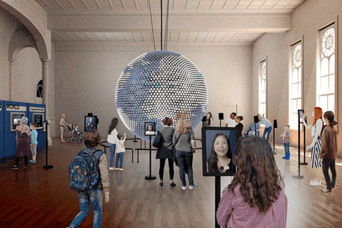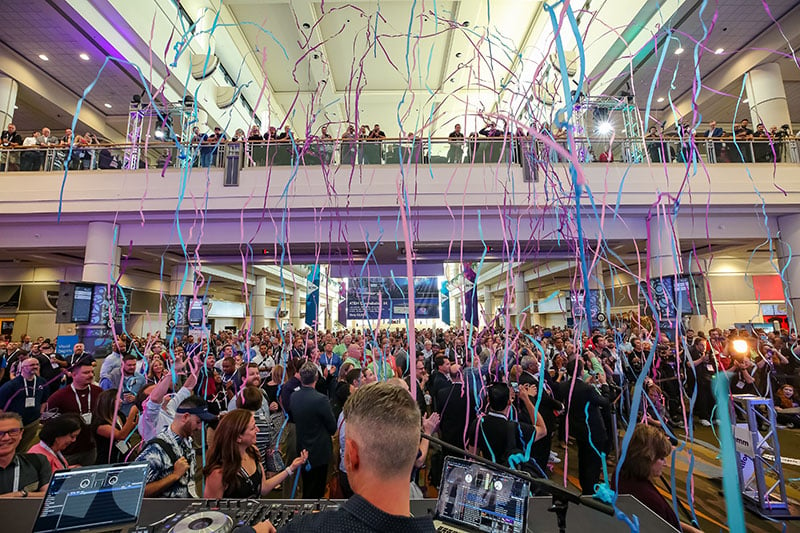How AV Integrators Fit Into the Experience Design Process
 The Spoken World at Plent Word Museum
The Spoken World at Plent Word Museum
Sasha Harris-Cronin, BBI Engineering: We intrude. We just sort of bowl our way into the middle of things and scatter our opinions hither and yon. Oh no, wait. That’s clients.
Real answer: Experienced AV integrators not only know the “how” of AV hardware, but also the “why” and the “when.” After working in this industry for many years and doing up to 20 projects in a year, our understanding of how and when people use technology is very deep. I think that, especially in the contexts of museums, EBCs (executive briefing centers), and immersive experiences, AV integrators should be involved in the process as early as possible, not only to specify equipment, but for deep conversations about interaction design and to do physical sketches and prototypes.
Maria Mortati, Maria Mortati Experience Design: The model has been that AV integration happens a little further down the line in the process. Now that we are looking at how to create experiences in new contexts and scales, it becomes important to be able to engage earlier. That community has expertise that I want to know about during the idea development. We will need to create shared languages to do that. I’m specifically interested in finding out how we can do iterative development, as that’s essential to the creative process. Especially so when you get to public experiences.Mortati and Harris-Cronin discuss the challenges and opportunities presented by increasingly virtual and touchless user experiences that help to inspire a new generation of AV designs.
Michelle Higa Fox, Slanted Studios: Screens are evolving into new form factors that are becoming the skin of everyday life. As these canvases expand, AV integrators are essential to understanding both what possibilities are available and how to execute them.
Nathan Adkisson, Local Projects: AV integrators have the most experience seeing projects actually get built and used in the wild. They don't just know what has succeeded or failed before – they know why, and they also know what is possible but hasn't been done yet. That insight is invaluable. I work across all phases of our projects, and there are questions for integrators that come up every day. That is not an exaggeration.
Songul Aslanturk, Google: It’s an inclusive work process – working closely from the start to generate ideas and understand each other's point of view as a full team is the key to create great experiences. As a designer, we help the team focus on the users/visitors. AV integrators help realize ideas and share their technical expertise for creating a successful experience.
David Bianciardi, AV&C: Ideally, early. This kind of work is an interdisciplinary team sport .… But if you’re going to join the party early, know what’s going on and how you can help. Immersion, discovery, and concept phases are mostly about asking questions, not necessarily having the answers. It isn’t a competition to get to “solution” or “part number” the fastest, but actually a time to explore many possibilities; some of which may require more or less technical input (or implementation scope). I think AV integrators have a lot to contribute in those early days by bringing in their curious and open-minded folks (i.e., design thinkers) who see value in contributing early rather than waiting for a bid set.
Emily Conrad, Tessellate: The integration of technology is what often differentiates between a mediocre experience and an exceptional one. You can have the best idea designed and documented, but if the implementation isn't just right, it detracts from the overall intention. For us, we work with AV integrators upfront to help inform and develop the design. It's not just "design then build," it's getting the right people at the table early on. This process not only serves the design better but helps mitigate issues as the project goes into production.
Paul Chavez, Arup: AV integrators are the primary owners of the experience build process, but many hybrid design/build firms may still dominate in the near future as complex interactive spaces require special skills that a typical AV integrator may not have. In addition, many complex, interactive installations require agile, iterative designs that require rapid prototypes and fast failure; skills that are best practiced in the creator’s studio rather than through a contractual agreement. As more immersive tools such as generic projection mapping kits become mature, inexpensive and commonplace, we’ll see immersive spaces become part of the typical design/bid/build routine.





